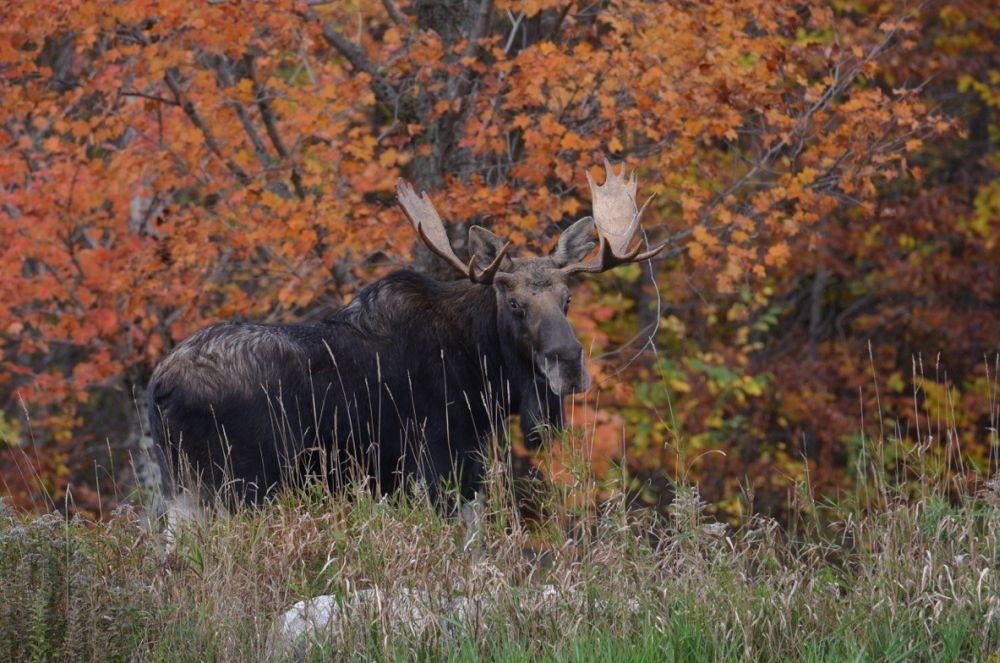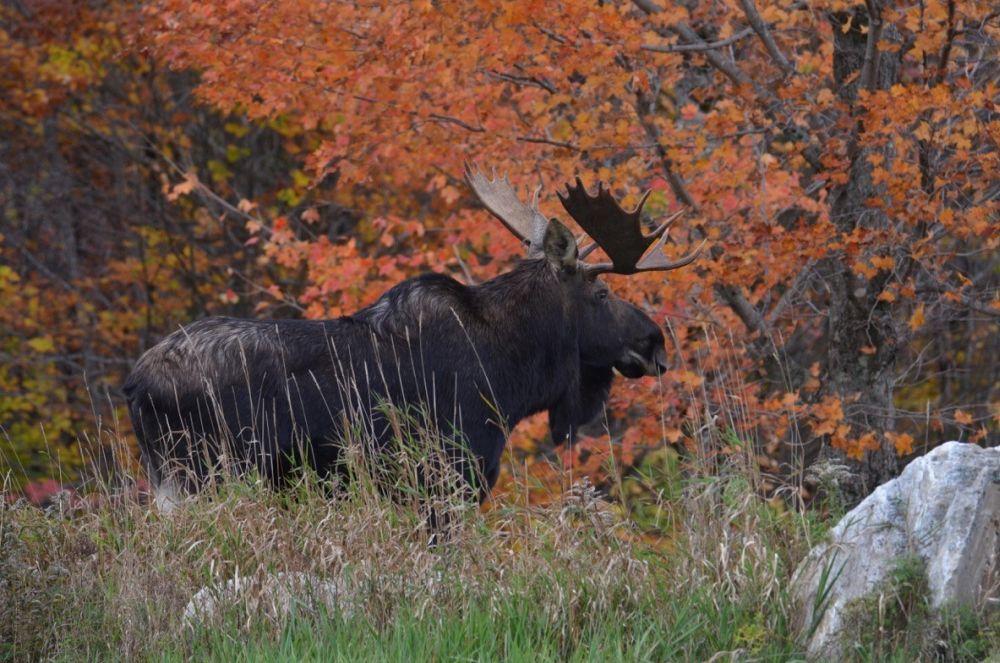The moose breeding season is October
- Tags:
- Wildlife

When cooler weather arrives and foliage reaches peak in October, bull moose wander more widely in search of cow moose.
Orford, New Hampshire Tree Farmer Tom Thomson shared two recent photos he took of a bull moose near Mount Cube on the Thomson Family Tree Farm in Orford.
October is not only for peak foliage. Peak moose "rut" - the annual breeding season - occurs in mid October when mature bulls wander more widely in search of available mates, female cows.
Moose and deer antlers are the fastest growing bone tissues in the entire animal kingdom. Fed by a network of blood-rich capillaries in summer velvet, the underlying bone grows from minerals contained in plant materials moose consume in summer.
Summer moose diet comprise aquatic vegetation and tender forest leaves of valley landscapes. Winter diets are conifers and the twigs and buds of hardwoods, particularly red maple and striped maple where moose winter in higher elevation upland forests of the northern Boreal forest regions of New England. "Moose" is a derivation of a native Algonquin name meaning 'twig-eater.'
Antlers grow during spring and summer and are used for territorial defense and sparring with other bulls during the fall breeding season. The antlers of moose and deeer are shed annually - discarded as hormone levels plummet in early winter after breeding seasons end.
October is the right time to see the fleeting colorful leaves and the impressive antlers of powerful mature North Country bull moose. Soon both leaves and antlers will lie fallen on the forest floor to be covered by Deccember snowfall across the White Mountains region.

